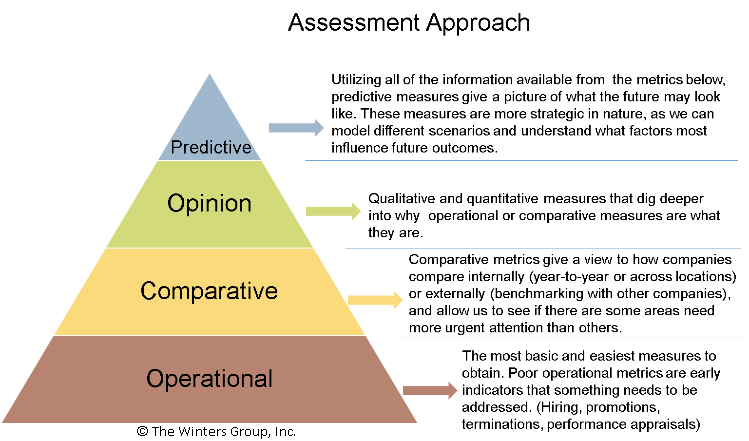![]()
Over the past few weeks, we’ve explored several factors that contribute to successful and sustainable diversity and inclusion (D&I) strategies: engaged leadership, a developmental approach to diversity and inclusion education, and cross-functional collaboration. This week, we explore one final factor that we consider critical to a successful diversity and inclusion program: meaningful metrics.
It is not uncommon for us to work with organizations and hear leaders suggest that there is little to no return on the investment made on diversity and inclusion initiatives. In these environments, D&I is often positioned as a “feel good” initiative, limited to “fluff” programs, and having little to no impact on the business’ bottom line. What we have found, is that in these organizations, the misconceptions on business impact, or lack thereof, are due to the organization’s failure to establish metrics. And in those organizations where there may be metrics, they are often time limited to traditional data points linked to compliance obligations: representation based on race/ethnicity and gender and, perhaps, personnel activity data. In essence, those organizations are merely “counting heads.”
However, in order for a diversity and inclusion program or strategy to be successful and outcomes measurable, organizations must take the approach of “making heads count.” Shifting from “counting heads” to “making heads count” means utilizing metrics that quantify and qualify how the organization defines inclusion and identifying specific outcomes that will be associated with success. For example, some organizations consider employee engagement scores as viable indicators of inclusion. Other organizations may consider employee participation rates in employee resource groups and developmental programs as outcomes associated with a successful D&I program or strategy.
In addition, metrics also support in identifying the organization’s current state as it relates to diversity and inclusion. In many cases, organizations make the mistake of relying solely on anecdotal data and assumptions when deciding “where to start” in addressing D&I within the organization. The flaw in this approach becomes most evident when it comes time to justify, gain buy-in, or articulate the business case for such programs.
When we engage organizations in D&I strategic planning, The Winters Group uses a comprehensive assessment process that includes examining operational and comparative measures, opinions, as well as predictive analyses (as pictured below).

Some meaningful metrics may include:
- Employee Engagement Survey Results by Demographic: Traditional engagement surveys measure the opinions of employees. However, collecting demographic data gives the organization the opportunity to measure the experiences of employees and disparities that may exist across groups.
- Predictive Personnel Activity Analytics: There is power in having the capability to quantify how the business’ current practices can impact the future of the business. Predictive hiring, termination, and promotion numbers can tell a powerful story about how an organization’s culture and practices may or may not be aligned with the its aspirations for inclusion.
- Pre and Post Training Measures: Tools like the Intercultural Development Inventory can be used to gauge the organization’s cultural competence pre-learning/training and post-training. Movement along the Intercultural Development Continuum, for example, could be an excellent indicator of the ROI on D&I education efforts.
- Participation Rates in ERGs and Mentoring programs: The number of employees who participate in D&I related programs (e.g. ERGs) could also be used to quantify ROI. Moreover, linking those rates to engagement scores or terminations could also be a relevant data point.
In essence, metrics matter. As with any other area of the business, meaningful data, analysis, and strategic inquiry support in not only identifying the most impactful course of action, but also measuring the success of such efforts. As the saying goes, “what gets measured, gets done.”


















